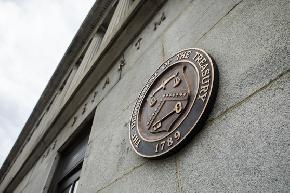WASHINGTON, DC-In any number of ways the commercial real estate industry would like to experience a flashback to 2007. Unfortunately for it, proposals to change the carried interest tax characterization to ordinary income levels from the capital gains tax rate, is not one of them. The Obama Administration has said it wants to do just that in its budget that was released last week.
Carried interest is the percentage of a fund’s or joint venture’s or limited partnership’s profits that a general partner takes as compensation. Many real estate partnerships are structured around this concept with developers taking much of their compensation this way, as opposed to a salary. Changing its tax characterization to ordinary income, in effect tripling it from the current 15% capital gains tax, would have a clear chilling affect on these structures and the subsequent projects.
Congress has toyed with this proposal before, making it part of various pieces of legislation in 2007. Even with a working capital market system and robust CRE environment, the carried interest proposal was viewed as a serious threat to funding real estate. A Real Estate Roundtable study in 2007 found that the cost of the proposal to the industry could reach as much as $20 billion. Even though there was little chance it would have become law, the industry mounted a vigorous lobbying campaign against the idea.
On the campaign trail Obama revived the proposal. Shortly after his election there was a sense that he would not tinker with the rates given the seriousness of the economic decline.
There is still a chance it won’t happen, Edward Mermelstein, managing partner at Edward A. Mermelstein & Associates, a New York City-based real estate law firm, tells GlobeSt.com. “I have a feeling the industry lobby will have something to say about it,” he says. “That tax rate is one of the few benefits of doing any development in the commercial field. There is large group of people who invest in real estate that would walk away without out.”
Of the investors that do decide to remain, without a doubt tax professionals and attorney will develop new structures to try to recapture the benefits. None of these structures have been tested, Mermelstein points out, which is a risk in of itself.
There are a number of theoretical structures that could be attempted, Greg McLaughlin, a senior partner at Tripp Scott, tells GlboeSt.com, starting with repricing the deal between the general partner or developer and its investing partners. It could offer more upfront fees to the general partner or deductible management fees charged over the course of the deal. It could also lower the preferred return to the investing partners or develop a structure in which the general partner has a capital interest and additional distributions to the general partner are allocated based on its capital interest, as opposed to the carry or profits interest. Another possibility, less likely though to actually be realized, McLaughlin believes is to increase the carry interest percentage of the overall deal.
Either way, he says, “The result is the change in the law that will impact an industry that politicians publicly state they are not intending it impact. We will be able to plan around a good portion of the impact of the change in the law so the government will not realize the revenue they are planning on receiving, but will have already spent.”
Even if these new alternatives do pass IRS muster, they are not likely to completely mimic the same benefits of carried interest that is taxed at the capital gains rate. “I don’t think there is likely to be any silver bullet to get fund sponsors the same economic after-tax deal after this proposal is enacted,” John Sullivan, chair of DLA Piper’s Real Estate group in Boston, tells GlobeSt.com.
One interesting aspect of this is that, if the value of the carried interest decreases, as it will if taxed as ordinary income, this may cause fund sponsors to push for lower hurdle rates in new funds, Sullivan continues. By that he means to decrease the profit that must be realized by the LPs before the GP starts to receive carried interest. “Lower hurdle rates will result in less profit to the fund investors, which in many cases include pension funds and other retirement vehicles.”
In other words, there may be a tradeoff to be made between higher tax revenue today and less money going to the pension funds and other retirement investors in the future, Sullivan says. “That said, in the current economic climate, it may be difficult for fund sponsors to get investors to agree to lower hurdle rates.”





 Copyright © 2024 ALM Global, LLC. All Rights Reserved.
Copyright © 2024 ALM Global, LLC. All Rights Reserved.











